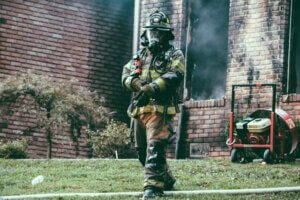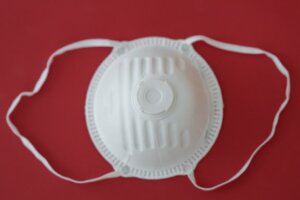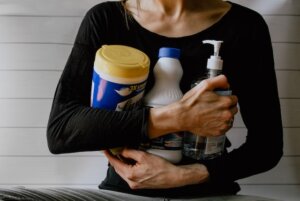DIY Fire Damage Cleaning: Dos and Don’ts
DIY Fire Damage Cleaning: Dos and Don’ts
Summary
This article outlines the dos and don’ts of DIY fire damage cleaning, emphasising safety and methodical cleaning practices. It advises assessing the damage, wearing protective gear, dry cleaning before wet cleaning, using appropriate cleaning agents, cleaning from top to bottom, and addressing HVAC systems. It cautions against rushing, using water on grease fires, neglecting hidden areas, using standard products for specialised cleaning, handling electrical appliances, and discarding materials before insurance claims are processed. Professional help is recommended for extensive damage, and restoration goes beyond cleaning, requiring rebuilding and repairing.
When facing the aftermath of a fire, homeowners often grapple with the daunting task of cleaning up and restoring their property. While professional services are recommended for extensive damage, there are certain aspects of fire damage cleaning that can be handled with DIY methods. However, it’s crucial to approach this task with caution and knowledge. Here, we delve into the essential dos and don’ts of DIY fire damage cleaning, providing comprehensive guidance to ensure safety and effectiveness.
Understanding the Scope of Fire Damage
Before embarking on any fire damage cleaning process, it’s important to assess the extent of the fire damage. This includes evaluating structural integrity, electrical systems, and the presence of hazardous materials like asbestos or lead. In cases of severe damage, consulting professionals is a must to ensure your safety.
Dos of DIY Fire Damage Cleaning
Safety First: Always wear protective gear, including gloves, masks, and eye protection when undertaking fire damage cleaning. Ensure good ventilation in the cleaning area to avoid inhaling harmful particles.
Document Damage: Before cleaning, document the damage for insurance purposes. Take photos and list all affected items.
Start with Dry Cleaning: Begin by removing soot and debris with a dry sponge or vacuum. Wet cleaning can smear soot, making it harder to remove.
Use Appropriate Cleaning Agents: Use specially formulated cleaners designed for soot and smoke. Avoid harsh chemicals that can further damage surfaces.
Clean from Top to Bottom: Start cleaning from the ceiling and work your way down to the floors. This method prevents soot from settling on already cleaned areas.
Deodorise Effectively: Utilise baking soda or activated charcoal to absorb odours. Avoid merely masking smells with fragrances.
Focus on HVAC Systems: Clean and replace filters in your heating, ventilation, and air conditioning systems to prevent the spread of soot and smoke particles.
Salvage What You Can: Gently clean and restore salvageable items, such as clothing and linens, using appropriate cleaning methods.
Don’ts of DIY Fire Damage Cleaning
Don’t Rush into Cleaning: Allow the property to air out and dry. Rushing into cleaning can cause more harm than good.
Avoid Using Water on Grease Fires: Water can spread grease fire residue, making the cleaning process more difficult.
Don’t Ignore Hidden Areas: Clean hidden areas like behind appliances and inside cabinets. Soot and smoke can accumulate in these spots.
Don’t Use Standard Cleaning Products: Regular household cleaners may not be effective against fire residue and can sometimes cause adverse chemical reactions.
Avoid Cleaning Electrical Appliances: Leave the cleaning and inspection of electrical appliances to professionals to avoid the risk of electrocution or further damage.
Don’t Dispose of Damaged Material Hastily: Keep damaged materials until the insurance claim process is complete. Disposing of them prematurely can affect your claim.
Professional Consultation
While DIY fire damage cleaning can be effective for minor issues, it’s essential to consult with professionals for extensive damage. They have the expertise, equipment, and safety measures in place to handle severe cases.
Restoration Beyond Cleaning
Remember, fire damage restoration goes beyond mere cleaning. It includes repairing and rebuilding structural elements of the property. For such tasks, professional assistance is invaluable.
DIY fire damage cleaning requires a careful, methodical approach. By following these dos and don’ts, homeowners can effectively tackle minor fire damage, ensuring a safe and efficient restoration process. However, for extensive damages, the expertise of professional services is indispensable.
FAQs
What is the best way to clean soot off walls and ceilings?
The best way to clean soot from walls and ceilings is to first use a dry-cleaning sponge or a vacuum with a brush attachment to gently remove loose soot particles. Avoid using water or wet methods initially, as this can smear the soot. After dry cleaning, use a mild detergent or a solution specifically designed for soot removal.
Can soot damage electronic equipment, and how can it be cleaned?
Yes, soot can damage electronic equipment by infiltrating internal components and causing corrosion or short circuits. For cleaning electronics, turn off and unplug the device, then gently remove surface soot with a dry microfiber cloth. Avoid using liquid cleaners or applying too much pressure. For internal cleaning or if the device is heavily sooted, it’s best to consult a professional electronic cleaning service.
Is it safe to clean soot by myself, and what precautions should I take?
Cleaning light soot deposits by yourself can be safe if you take the proper precautions. Wear protective gear like gloves, masks, and safety goggles to avoid inhaling soot or getting it on your skin. Ensure good ventilation in the area where you’re working. However, for extensive soot damage, especially after a fire, it’s safer to consult professional cleaners, as they have the expertise and equipment to handle hazardous materials and situations.
Why Choose AllAces?
AllAces Cleaning & Restoration has more than 35 years of industry experience handling extensive fire damage restoration projects across Brisbane, Sydney, Melbourne, and surrounds. Our IICRC-certified technicians are experts in the field ensuring the best possible results and the return of a pre-loss condition.



